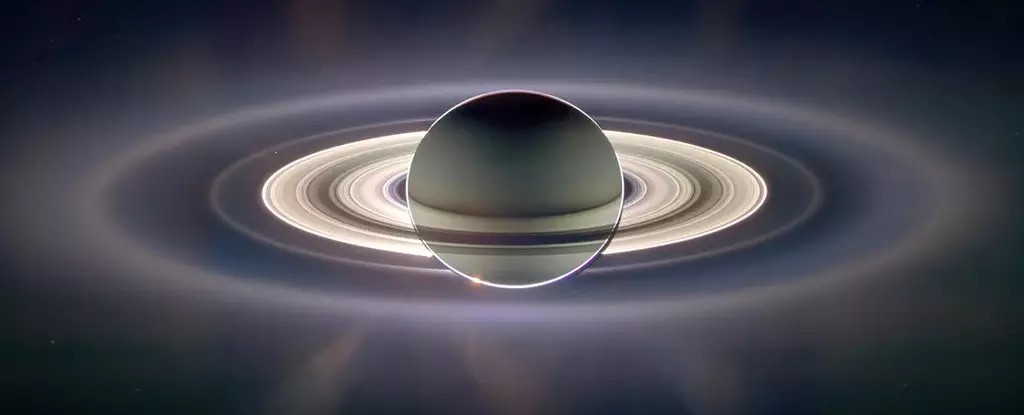Saturn, the jewel of our Solar System, has long mesmerized humanity with its stunning ring system. However, a long-held belief regarding the age of these rings was recently challenged, igniting a passionate discourse among planetary scientists. Researchers from the Institute of Science Tokyo and the French National Centre for Scientific Research have provided compelling evidence suggesting that Saturn’s rings may have ancient origins that far exceed previously thought. This revelation is not merely an academic query but may redefine our understanding of planetary formation and evolution in the cosmos.
When the Cassini spacecraft entered Saturn’s orbit in 2004, it was expected to unveil the intricacies of this magnificent planet alongside its rings. With groundbreaking data, Cassini unveiled the surprising cleanliness of Saturn’s rings. Comprised predominantly of ice chunks and particles, the rings lacked the anticipated dust typically generated from countless micrometeoroid impacts over billions of years. This clean appearance led many scientists to propose that Saturn’s rings were a relatively youthful formation, only 100 to 400 million years old. The thought that these rings could be absent during the age of the dinosaurs caused quite a stir in both scientific circles and public imagination.
Yet, researchers now assert that this visual cleanliness does not necessarily dictate youth. Ryuki Hyodo, a planetary scientist, emphasizes an important tenet of scientific inquiry: conclusions drawn solely based on first impressions can be misleading. New theoretical models suggest that the pristine nature of the rings could be explained by mechanisms underpinned by physical processes on a cosmic scale.
To unravel the enigma, Hyodo and his team conducted an exploration into the interactions between micrometeoroids and the icy constituents of the rings. They discovered that when high-speed micrometeoroids—some less than 100 microns in size—collide with the larger ice chunks, they do not simply add dust. Instead, the heat generated during such impacts causes both the projectile and a minute section of the ice to vaporize. This process produces nanoparticles and other residual atoms, contributing to a complex interaction that preserves the overall cleanliness of the ring’s structure.
This finding challenges the prevailing assumptions about the maintenance of Saturn’s rings. The vaporization and subsequent ionization of debris indicate not only that the rings might be much older than previously believed but also that the mechanisms governing their integrity are dynamic and intricate. Instead of becoming denser or darker over time as a result of meteoric impacts, the rings may continuously shed and regenerate material, resulting in their seemingly untouched appearance.
The implications of these findings stretch far beyond Saturn. If Saturn’s rings are indeed ancient, then they may represent a class of ring systems that are more common than previously acknowledged among gas giants throughout the universe. As astronomers continue to identify numerous gas giant exoplanets beyond our Solar System, the potential for discovering rings similar to Saturn’s opens new avenues for research. This insight compels scientists to reassess how we perceive planetary formation dynamics and the age of celestial structures.
The understanding of rings as either transient features or long-lasting systems could redefine our observations of exoplanets. If Saturn’s rings have persisted for billions of years, it crystallizes a notion that rings could be an intrinsic aspect of many planetary systems, providing rich material for studying the history and evolution of celestial bodies.
As the quest for understanding Saturn continues, Hyodo’s team is poised to explore these findings deeply. With ongoing experiments designed to simulate micrometeoroid impacts, they aim to provide empirical validation for their theories. Such studies are critical in deciphering past events in the Solar System and understanding how ancient collisions among celestial bodies may have birthed the majestic rings of Saturn. Additionally, it opens the door for potential future missions to study these rings more closely.
Scientific inquiry thrives on challenges to the status quo. The evolving narrative surrounding Saturn’s rings exemplifies the nature of discovery—where questions lead to deeper understanding and a clearer depiction of the universe’s history. As scientists embark on new adventures to uncover the secrets these rings may hold, the grand dance of exploration continues, reminding us of the wondrous complexities surrounding our celestial neighbors.

